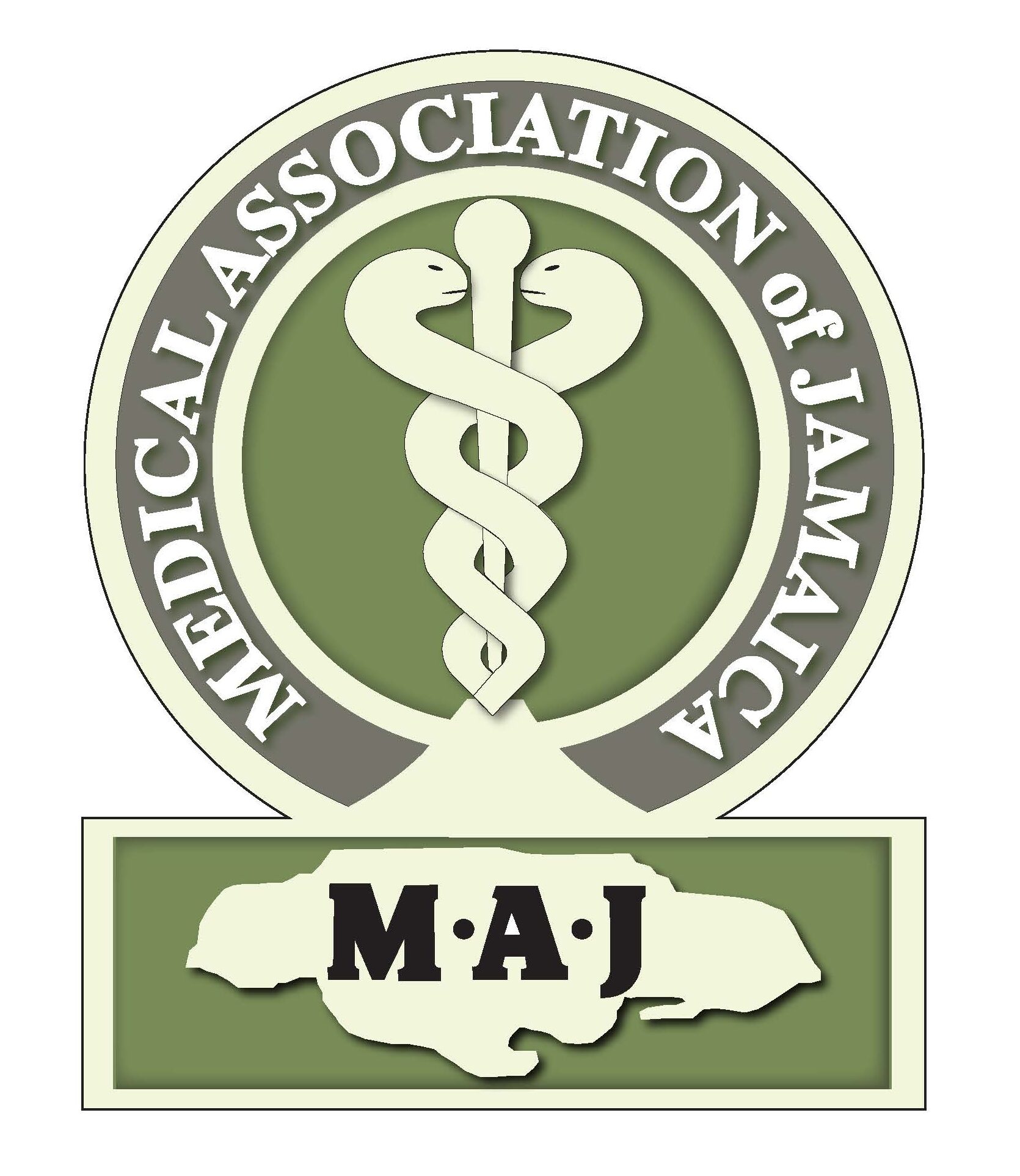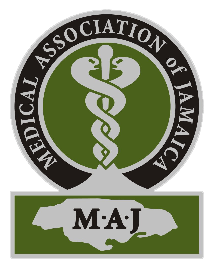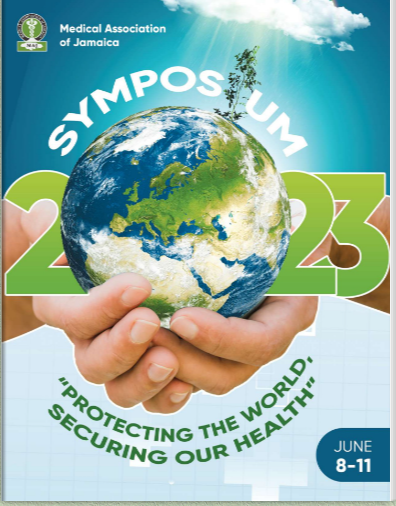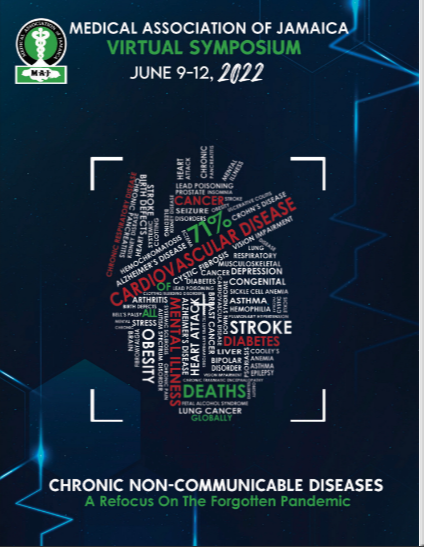Re-thinking the medical management of keloids: Reflections and experiences from a busy urban clinical practice in Kingston, Jamaica.
Dr. Patricia Yap B.Sc. MB.BS. Dip. Derm.1, Dr. Jonathan Ho MB.BS., Dr.Sc. Dip. Dermpath2, and Prof. Kevin A, Fenton MB.BS. (Hons) M.Sc. Ph.D. FFPH3
1. Consultant Dermatologist, Apex Skin and Laser center, Kingston, Jamaica
2. Consultant Dermatologist and Dermo-Pathologist, University of the West Indies, Mona, Jamaica
3. Honorary Professor of Epidemiology and Public Health, University College London, London UK
Corresponding Author: Dr Patricia Yap. Email: patyapja@gmail.com
Introduction
Keloids are nodular, firm, tender, movable, non-encapsulated masses of hyperplastic scar tissue, occurring in the dermis and adjacent subcutaneous tissue, usually after trauma, surgery, burns, or severe cutaneous disease such as cystic acne. Traditional treatments have largely relied on combinations of surgery, radiotherapy, chemotherapy and cryotherapy, in part reflecting the historic view of keloids as benign tumours. These treatments have relatively poor outcomes, often complicated by keloid regrowth after repeated attempts at removal. Medical management of keloids remains underutilized, so too has the use of medical treatments to prevent recurrence.
This presentation reviews the experiences of three patients that benefitted from medical treatment of confirmed keloids, all managed by Dr. Patricia Yap in her clinical practice in Kingston Jamaica. We introduce the application and results of a novel topical treatment option which demonstrates objective improvements in clinical outcomes (reductions in the size, appearance and recurrence of keloids) with enhanced patient satisfaction.
Background
In 2002, a middle-aged female patient attended Dr. Yap’s practice for a consultation regarding multiple keloids on her back. At this time, the typical treatment would have been the painful, uncomfortable intralesional steroid treatment. Each and every keloid would have had to be injected, therefore, the volume of Triamcinolone Acetonide (TA) solution would result in systemic side effects. The patient suggested that there should be a cream (topical treatment). With this suggestion, Dr. Yap who has a first degree in chemistry, created a unique delivery system that allowed the introduction of the steroid into the dermis topically.
On commencing treatment, the decision was taken to not to use intralesional steroids on the entire back as it would have incurred side effects. Consequently, a half back approach to application was implemented.
On the left of the patient’s back, intralesional steroids along with topical therapy was used, whereas on the right side, only the topical therapy was used. The keloids on both sides decreased in thickness, even though the left side progressed much faster. The patient experienced little-to-no systematic side effects and the outcomes (Figure 1.) were satisfactory for the patient with significant reduction in reported pain, itchiness, and growth.
Figure 1. Before and after images of Patient A. Female. Kingston, Jamaica
| BEFORE TREATMENT Month 0 | AFTER TREATMENT Month 3 |

Treatment applied: Left Back – Intralesional and Topical Therapy. Right Back – Topical Therapy only
Following this initial positive response, Dr Yap has refined and expanded the application of topical treatment for patients with keloids over the past seventeen years. The following case studies present 3 cases which demonstrate the success of topical treatments alongside or instead of intralesional injections.
Case Studies
In the three cases below and pictures that follow, it is evident that using a novel topical treatment option is beneficial to the patient. This not only gives control back to the patient but also results in decreasing the burden in the healthcare system.
Case 1: Combination therapy using topical and standard intralesional steroids.
Male, 35 years old, presented with extensive folliculitis keloidalis on the scalp involving the crown and the back of the head.
The patient was diagnosed with both folliculitis keloidalis on the crown of the head and folliculitis keoidalis nuchae at the back of the head (occipital area). For the former, the patient was applied the topical treatment only for one month. The folliculitis keloidalis of the crown resolved completely after this period (see Figure 2a).
For management of the folliculitis keloidalis nuchae, the patient was prescribed both intralesional and topical treatments. The intralesional steroid was given at the end of the first and second months of treatment to the folliculitis keloidalis nuchae. The third month only topical treatment was used. The resolution over the 3 month period is shown in Figure 2b.
Figure 2a. Before and after images of Case 1. Male. Aged 35. Kingston, Jamaica
| BEFORE TREATMENT Month 0 | AFTER TREATMENT Month 1 |
Diagnosis: Folliculitis keloidalis. Treatment applied: Topical therapy for 1 month only
Figure 2b. Before and after images of Case 1. Male. Aged 35. Kingston, Jamaica
| BEFORE TREATMENT Month 0 | AFTER TREATMENT Month 3 |

Diagnosis: Folliculitis keloidalis nuchae. Treatment applied: Topical therapy for 3 months, supported by intralesional steroids at the end of Months 1 and 2.
Case 2: Topical treatment post-surgical keloid scars
Female, 32 years old, with past history of keloids on chest and shoulder from minor injuries.
After having developed keloid scars after her first cesarean section, the patient requested post-op treatment for her second cesarean section to prevent keloid recurrence. At two weeks post-op care, the patient’s keloid already started to develop, shown on the right. The topical treatment was then applied for two weeks which resulted in 100% flattening.
| Treatment applied: Topical therapy only |
Figure 3. Before and after images of Case 2. Female. Aged 32 years. Kingston, Jamaica
| BEFORE TREATMENT Week 1 | AFTER TREATMENT Week 2 |

Case 3: Topical treatment monotherapy
Female, 67 years old, referred from a general practitioner with chronic itching and spontaneous keloid formation on chest for the past nine years.
This patient developed multiple keloids on her chest from scratching. The increased irritation caused loss of sleep and general discomfort. After one month of receiving the novel topical treatment, the patient was no longer uncomfortable and the keloids were flattened.
Figure 4. Before and after images of Case 3. Female. Aged 67. Kingston, Jamaica
| BEFORE TREATMENT Month 0 | AFTER TREATMENT Month 1 |

Treatment applied: Topical therapy only
Conclusions
These three cases are illustrative of the very positive treatment outcomes for keloids being achieved with medical treatment (topical applications) in Dr. Yap’s clinical practice for the past seventeen years. Unfortunately, when the patients are satisfied with the outcome, whether due to the decrease in pain, itchiness and size they often do not return to the clinic for the final picture. Further, more robust clinical studies are now planned to systematically study and document patient outcomes and improvements in patient experience.
However, from these documented case studies and clinical experience, it is evident that self-applied therapeutics can minimize healthcare burden by promoting self-treatment rather than intensive in-office treatment. The ability to self-manage with topical preparations also encourages early treatment to prevent future recurrence of keloids. They may therefore form the basis for effective first-line therapy for the medical treatment of keloids.





60 Responses
Your blog is a fountain of knowledge.
Good site you have got here.. It’s difficult to find quality writing like yours nowadays. I really appreciate people like you! Take care!!
I used to be able to find good advice from your blog posts.
I’m usually to blogging and i actually recognize your content. The article has actually peaks my interest. I’m going to bookmark your website and preserve checking for new information.
Exactly what I was looking for, thankyou for putting up.
very interesting info ! .
Outstanding post, you have pointed out some wonderful details , I likewise conceive this s a very excellent website.
you are in reality a good webmaster. The website loading velocity is amazing. It sort of feels that you’re doing any distinctive trick. Also, The contents are masterwork. you have done a fantastic job in this topic!
Write more, thats all I have to say. Literally, it seems as though you relied on the video to make your point. You clearly know what youre talking about, why throw away your intelligence on just posting videos to your site when you could be giving us something informative to read?
When I initially commented I clicked the -Notify me when new feedback are added- checkbox and now each time a comment is added I get 4 emails with the identical comment. Is there any method you may remove me from that service? Thanks!
Today, I went to the beach with my children. I found a sea shell and gave it to my 4 year old daughter and said “You can hear the ocean if you put this to your ear.” She placed the shell to her ear and screamed. There was a hermit crab inside and it pinched her ear. She never wants to go back! LoL I know this is totally off topic but I had to tell someone!
I don’t even know the way I stopped up here, however I assumed this put up used to be great. I do not understand who you’re however certainly you are going to a famous blogger should you are not already 😉 Cheers!
Yet another issue is really that video gaming has become one of the all-time largest forms of entertainment for people of various age groups. Kids enjoy video games, and adults do, too. Your XBox 360 has become the favorite video games systems for people who love to have hundreds of games available to them, and who like to learn live with others all over the world. Thanks for sharing your ideas.
I wanted to create you that very small word just to give many thanks the moment again for these incredible tricks you have shared above. This has been really wonderfully open-handed with people like you to provide openly exactly what most of us would have offered for sale for an e-book to make some profit for their own end, mostly considering the fact that you might well have done it in the event you considered necessary. These tips as well served to provide a easy way to understand that most people have the identical passion the same as mine to learn a good deal more with regards to this condition. I think there are several more enjoyable instances up front for people who go through your site.
Keep working ,fantastic job!
Its like you read my mind! You appear to know so much about this, like you wrote the book in it or something. I think that you can do with a few pics to drive the message home a little bit, but instead of that, this is fantastic blog. An excellent read. I’ll certainly be back.
Hi would you mind stating which blog platform you’re using? I’m planning to start my own blog soon but I’m having a difficult time choosing between BlogEngine/Wordpress/B2evolution and Drupal. The reason I ask is because your design and style seems different then most blogs and I’m looking for something completely unique. P.S Sorry for getting off-topic but I had to ask!
Thanks for this glorious article. Yet another thing to mention is that nearly all digital cameras can come equipped with the zoom lens that permits more or less of a scene to be included by way of ‘zooming’ in and out. These kinds of changes in focus length tend to be reflected within the viewfinder and on huge display screen at the back of the very camera.
Do you have a spam problem on this blog; I also am a blogger, and I was wanting to know your situation; many of us have developed some nice procedures and we are looking to exchange strategies with others, why not shoot me an e-mail if interested.
Hello, I enjoy reading through your post. I wanted to write a
little comment to support you.
my web site … vpn special
Simply wish to say your article is as surprising. The clarity in your post is simply spectacular and i could assume you are an expert on this subject.
Well with your permission allow me to grab your feed to keep updated with forthcoming post.
Thanks a million and please keep up the rewarding work.
Stop by my web site vpn special coupon
Hey there are using WordPress for your blog platform? I’m new to the blog world but I’m trying to get started and set up my own. Do you need any html coding knowledge to make your own blog? Any help would be greatly appreciated!
This is a excellent web page, will you be interested in doing an interview about how you created it? If so e-mail me!
When I initially commented I clicked the “Notify me when new comments are added” checkbox and now each time a comment is added I get several e-mails with the same comment. Is there any way you can remove people from that service? Many thanks!
I’m not sure exactly why but this site is loading incredibly slow for me. Is anyone else having this issue or is it a issue on my end? I’ll check back later and see if the problem still exists.
Your blog won’t render properly on my android – you may wanna try and repair that
Right now it seems like BlogEngine is the preferred blogging platform available right now. (from what I’ve read) Is that what you are using on your blog?
I’m really enjoying the design and layout of your website. It’s a very easy on the eyes which makes it much more pleasant for me to come here and visit more often. Did you hire out a designer to create your theme? Excellent work!
Hello! Someone in my Facebook group shared this website with us so I came to check it out. I’m definitely loving the information. I’m bookmarking and will be tweeting this to my followers! Outstanding blog and fantastic design and style.
Greetings! I know this is kinda off topic nevertheless I’d figured I’d ask. Would you be interested in exchanging links or maybe guest authoring a blog article or vice-versa? My website addresses a lot of the same topics as yours and I think we could greatly benefit from each other. If you happen to be interested feel free to send me an email. I look forward to hearing from you! Awesome blog by the way!
Music started playing when I opened up this web-site, so frustrating!
I believe one of your advertisings triggered my internet browser to resize, you may well want to put that on your blacklist.
Thanks for your blog post. I would love to say that a health insurance brokerage also works for the benefit of the coordinators of a group insurance plan. The health insurance broker is given a listing of benefits desired by a person or a group coordinator. Exactly what a broker does is find individuals as well as coordinators which often best match those wants. Then he offers his ideas and if both parties agree, this broker formulates a legal contract between the 2 parties.
Why people still use to read news papers when in this technological
globe the whole thing is presented on web?
Also visit my blog post … vpn special code
This design is wicked! You most certainly know how to keep a reader amused. Between your wit and your videos, I was almost moved to start my own blog (well, almost…HaHa!) Great job. I really enjoyed what you had to say, and more than that, how you presented it. Too cool!
Hi are using WordPress for your blog platform? I’m new to the blog world but I’m trying to get started and set up my own. Do you need any coding knowledge to make your own blog? Any help would be really appreciated!
Hmm it seems like your website ate my first comment (it was super long) so I guess I’ll just sum it up what I had written and say, I’m thoroughly enjoying your blog. I too am an aspiring blog blogger but I’m still new to the whole thing. Do you have any helpful hints for rookie blog writers? I’d really appreciate it.
Right now it sounds like Expression Engine is the best blogging platform available right now. (from what I’ve read) Is that what you’re using on your blog?
Hey! I just wanted to ask if you ever have any problems with hackers? My last blog (wordpress) was hacked and I ended up losing many months of hard work due to no back up. Do you have any solutions to stop hackers?
Needed to post you one tiny remark to say thank you as before on the exceptional opinions you’ve documented on this website. It’s quite shockingly generous of people like you to deliver without restraint all most of us would’ve distributed as an e-book to end up making some money for themselves, especially now that you might have tried it if you considered necessary. Those tactics likewise acted to provide a good way to fully grasp some people have a similar zeal just like my own to figure out very much more related to this problem. I am certain there are thousands of more fun sessions up front for people who check out your blog post.
some genuinely rattling work on behalf of the owner of this internet site, dead outstanding articles.
I like this weblog its a master peace ! .
very interesting points you have noted, appreciate it for putting up.
I like this website because so much useful material on here : D.
Hi there! I could have sworn I’ve been to this site before but after browsing through a few of the articles I realized
it’s new to me. Nonetheless, I’m certainly happy I discovered it and I’ll be bookmarking
it and checking back regularly!
Review my site; vpn special
Superb blog you have here but I was curious if you knew of any forums that cover the same topics discussed in this article?
I’d really love to be a part of community where I can get advice from other experienced individuals that share the same interest.
If you have any suggestions, please let me know. Thanks!
Also visit my page vpn special
Thanks designed for sharing such a fastidious opinion, piece of writing is
fastidious, thats why i have read it entirely
I am usually to running a blog and i really respect your content. The article has really peaks my interest. I am going to bookmark your web site and maintain checking for new information.
But wanna comment that you have a very decent internet site, I love the design and style it actually stands out.
With havin so much content do you ever run into any
problems of plagorism or copyright infringement? My
site has a lot of exclusive content I’ve either created myself or outsourced
but it looks like a lot of it is popping it up all
over the internet without my authorization. Do you know any ways to help prevent content from being ripped off?
I’d definitely appreciate it.
my blog post :: vpn special code
I enjoy your work, thanks for all the interesting content.
I very delighted to find this web site on bing, just what I was looking for : D likewise saved to bookmarks.
yeah bookmaking this wasn’t a speculative conclusion outstanding post! .
I reckon something truly special in this site.
You actually make it appear really easy with your presentation however I to find this topic to be really something which I believe I might never understand.
It seems too complicated and extremely large
for me. I am looking ahead for your subsequent post,
I will attempt to get the grasp of it!
my blog; vpn special coupon
Respect to website author, some excellent information .
Precisely what I was looking for, regards for putting up.
I discovered your blog website on google and examine just a few of your early posts. Continue to keep up the very good operate. I just extra up your RSS feed to my MSN Information Reader. Searching for forward to reading extra from you afterward!…
Thankyou for this post, I am a big fan of this internet site would like to proceed updated.
I would like to thank you for the efforts you have put in penning this website. I really hope to see the same high-grade content by you in the future as well. In fact, your creative writing abilities has motivated me to get my own, personal blog now 😉